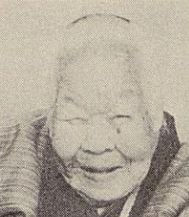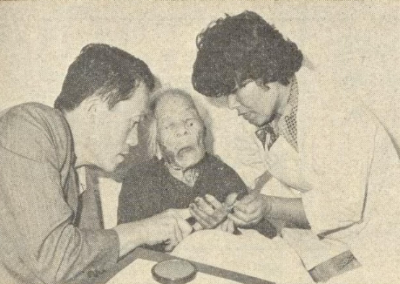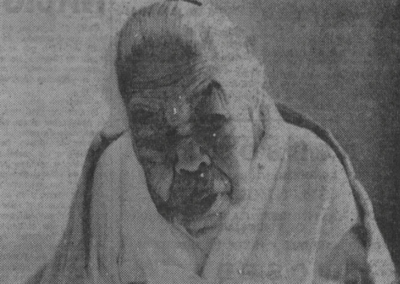Mito Umeda (Japanese: 梅田ミト) was a Japanese supercentenarian who held the Guinness World Record title for the world’s oldest living person from 1973 to 1975. At the time of her death, she was the oldest Japanese person ever.
BIOGRAPHY
Mito Umeda was born on 14 May 1863 (March 27, Bunkyū 3, in the Japanese calendar) in Takuma Village (now part of Kumamoto City), Kumamoto Prefecture, Japan. She was the eldest of four sisters in a farming family.
As a young girl, she witnessed the destruction of Kumamoto Castle during the Satsuma Rebellion (January 29 to September 24, 1877), a violent uprising in southern Kyushu. This vivid memory stayed with her well into her later years.
At the age of 17, Umeda married her first husband, who joined her family as a “muko-yōshi” (an adopted son-in-law). However, her mother strongly disapproved of him, and the couple was forced to divorce. Losing her beloved first husband remained one of her deepest regrets throughout her life. In 1900, at the age of 37, Umeda remarried. Her third husband, Yajirō Umeda, became her lifelong partner, and together they had two children, a son and a daughter. The couple worked tirelessly in agriculture, with Umeda often laboring up to nine hours a day until she was about 70 years old. Umeda experienced significant loss, including the deaths of her husband when she was 84 and all four of her children, who passed away before her.
She lived independently in a small six-tatami room until the age of 107, carrying water and performing other daily activities that kept her active. Afterward, she moved into a nursing home. At the age of 110, her day began at 6 a.m., and she rarely stayed in her room. Instead, she spent most of her time chatting with a close friend, a woman in her 90s who lived in a nearby room. When she first entered the home at the age of 107, Umeda enjoyed sewing cleaning cloths to donate to local schools.
By the time she turned 110, she found joy in playing with toys brought by visitors and participating in group activities like singing and dancing with her fellow residents. Despite her advanced age, Umeda remained remarkably healthy. Apart from a brief hospitalization for a cold at Kumamoto University Hospital at the age of 109, she had no significant medical history.
On 31 May 1975, at 1:02 a.m., Umeda passed away from heart failure at Kumamoto University Hospital in Kumamoto City, Kumamoto Prefecture, Japan, at the age of 112 years and 17 days. At the time of her death, her descendants included 10 grandchildren, 12 great-grandchildren, and 2 great-great-grandchildren.
RECOGNITION
On 21 July 1973, following the death of Yoshigiku Ito, Umeda was recognized as Japan’s oldest living person.
On 31 May 1975, at 1:02 a.m., Umeda passed away from heart failure at Kumamoto University Hospital at the age of 112 years and 17 days. At the time of her death, she was Japan’s oldest person and the world’s oldest living person.
Her age was validated by the Gerontology Research Group and later recognized by the Guinness World Records.
ATTRIBUTION
*”長寿日本一 梅田ミトさん会見記” – Kyosai Shinpo, June 1975
*”日本一長寿を訪ねて” – Nippon Kodokai, December 1973
*”すばらしい老人達 梅田ミト(109歳 女)” – Tairyusha, 1972
[crp limit=’4′ ]




